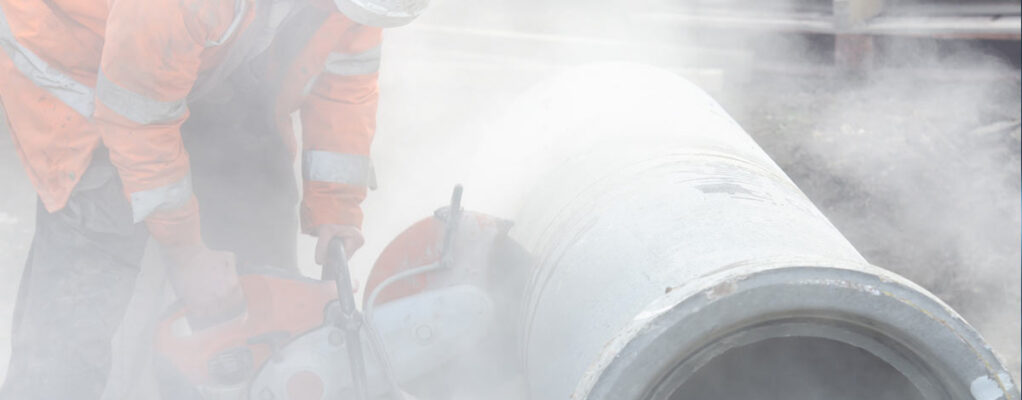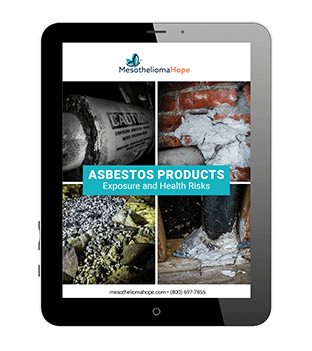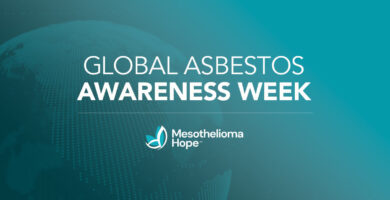Since the dangers of asbestos have become more widely known, the Occupational Health and Safety Administration (OSHA) has been carefully regulating the cancer-causing mineral to keep workers safe from developing mesothelioma and other asbestos diseases.
Both federal and state regulations require workplaces to measure the amount of asbestos present and take steps to keep employees safe. Unfortunately, some employers do not always follow these safety guidelines, putting workers at risk of serious health consequences decades later.
Learn about OSHA’s asbestos standards, your rights as a worker, and how Mesothelioma Hope can help if you’ve been diagnosed with an illness from occupational asbestos exposure.
OSHA Asbestos Standards and Regulations
OSHA has three different sets of standards to protect workers from asbestos. These standards apply to all workplaces, including those that are considered high risk for asbestos exposure, like construction sites, auto repair shops, and shipyards.
OSHA’s worksite protections for asbestos include:
- Assessment and monitoring: Workplaces must determine if any of their employees’ job duties will cause asbestos fibers to become airborne. If they will, routine monitoring must be performed to ensure exposure limits are not exceeded.
- Exposure limits: The permissible exposure limit (PEL) for airborne asbestos is no more than an average of 0.1 fiber per cubic centimeter over an 8-hour period. The excursion limit (EL) is less than 1 asbestos fiber per cubic centimeter over a 30-minute period.
- Hazard communication and personal protective equipment: If asbestos is present, workplaces must reduce the risk as much as possible by clearly communicating the hazard and providing proper protective equipment like air-purifying respirators.
- Recordkeeping: Employers must keep copies of all tests documenting levels of asbestos and surveys tracking workers’ medical conditions possibly linked to their occupation for at least 30 years.
- Separate and safe break areas: Job sites that require work with asbestos must provide a break area that is separate from the work area and hygiene stations to reduce the risk of contamination.
While these standards protect workers in all 50 states, OSHA has approved more specific regulations in 29 states. Check with your local OSHA office for the asbestos regulations that apply in your area.
Keep in mind, though, that there is no safe level of exposure to asbestos, meaning even one fiber can cause damage to the body’s sensitive tissues.
Download our Free Asbestos Products Guide to learn more about the health hazards of asbestos and what you can do if you or a loved one was exposed.
What Are My Rights as a Worker?
Under OSHA regulations, you have the right to a safe workplace that doesn’t put you at risk of serious injury or illness.
You also have the right to:
- Access records of hazard measurements as well as work-related illnesses and injuries
- File a confidential complaint with OSHA and request an inspection of your workplace to check for safety hazards without fear of retaliation
- Proper safety gear and personal protective equipment
- Regular training and information about workplace hazards and how to prevent dangerous exposures
If you are concerned about your health and safety on the job or that your employer is not following OSHA asbestos standards, consider reporting this to OSHA.
How Do I Complain About Asbestos to OSHA?
To file a complaint with OSHA about health-related concerns or an unsafe workplace, you should contact your local OSHA office as soon as possible.
You can file a complaint by:
- Calling your local OSHA office to share your complaint
- Completing an online complaint form on the OSHA website
- Sending a completed OSHA complaint form via email, fax, or U.S. mail
- Visiting your local OSHA office in person to discuss your complaint
It can feel stressful to come forward about concerns, especially if you fear your job may be at stake. However, OSHA is required to keep your identity protected so you do not face retaliation.
Helping Workers Diagnosed With Mesothelioma
For decades, asbestos product manufacturers hid the dangers of asbestos, exposing millions of dedicated workers to this devastating cancer-causing material. We have seen firsthand thousands of families hurt by mesothelioma through no fault of their own.
If you or someone you love has been diagnosed with mesothelioma from working around asbestos, you don’t have to walk this path alone. Help is available.
Our experienced Patient Advocates can help you access personalized:
- Treatment and medical care
- Financial assistance
- Support services
Get started by calling (866) 608-8933 or filling out our contact form today.










